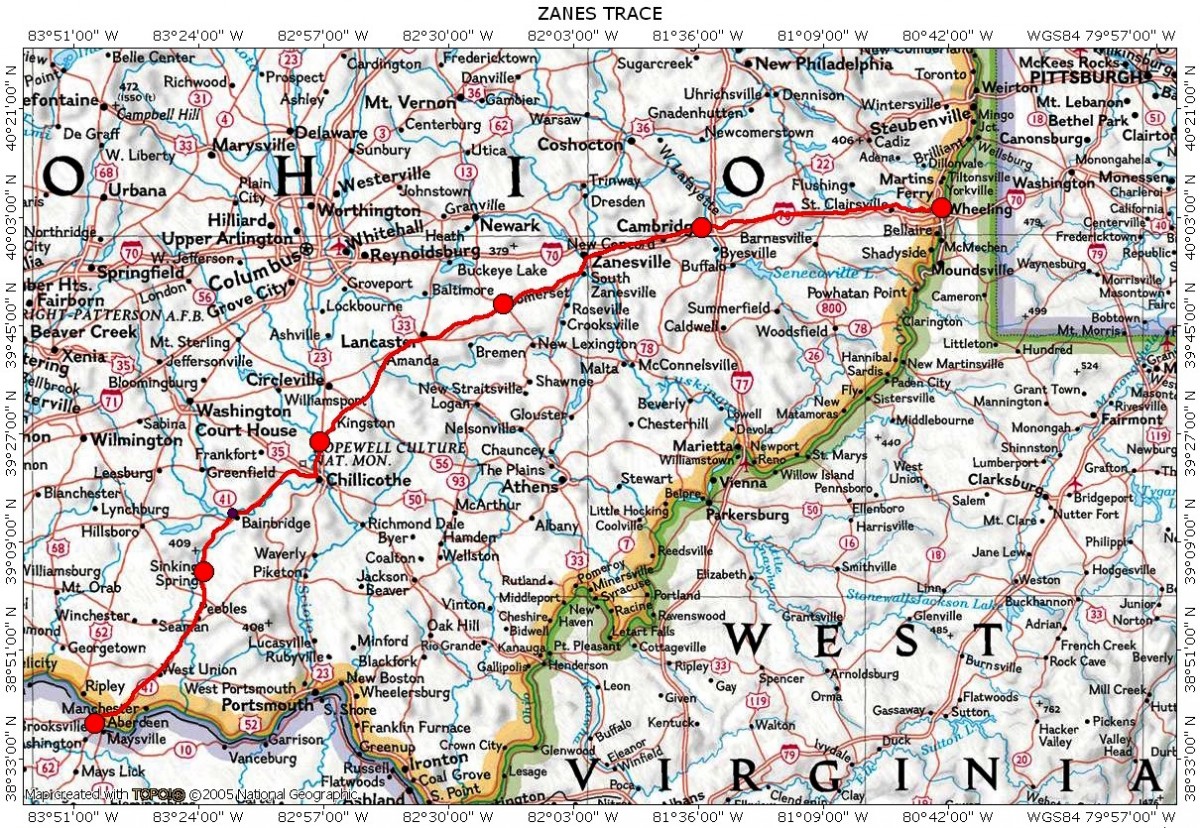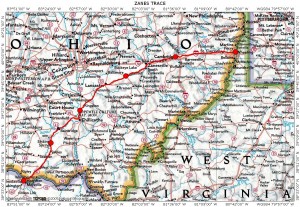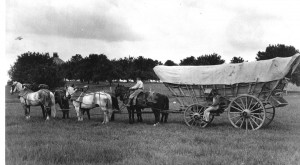My mother’s side of the family came from Germany in the late 18th century. My ancestors began their life in the United States in Pennsylvania because it was home to many Lutheran German immigrants. Michael Kuntz was a farmer who decided to take his family further west in search of more opportunities. The Zane’s Trace was under construction when Michael made his decision, so he brought his family along the path into Ohio. My ancestor, Michael Kuntz, took part in the German migration west to Ohio in the early 19th century in search of job opportunities.
Colonel Ebenezer Zane led the construction of the Zane’s Trace road in 1796 that connected Wheeling, Virginia to Maysville, Kentucky. Colonel Zane claimed to build the road because the army needed a more efficient way to get from Virginia to Kentucky, but he also wanted to buy cheap land along the way for personal gain. Job opportunities were produced by the construction of the road, but even more came about when Ohio became a state in 1803 and the road needed to be improved. Roads needed to be cleared of rocks, and bridges had to be built over rivers.
Michael Kuntz led his family down this trail while he took advantage of the abundance of jobs produced by the new road. Many German families had the same idea, which caused a German migration from Pennsylvania to Ohio in the early 19th century. Small towns were built along the pathway where Germans settled to farm. Unfortunately, Native Americans were taken advantage of and forced out of their homes by incoming settlers. A German trading post was established called Fort Loramie, which the locals called “New Berlin.” Michael Kuntz and his family lived by this settlement in Ohio and made a living as farmers.
Michael’s son, John Kuntz, was born in 1844 and continued working on his family’s farm. John and his son, Olan took advantage of railroad jobs in the late 19th century. Around this time Ohio was becoming more civilized, and the state was in need of railroads that could get the Ohio crops to the eastern population. During World War I, resentment towards German Americans grew in the United States. Many German Ohio immigrants were looked down upon and attacked by native born Americans. Olan Kuntz decided to buy a Conestoga wagon, which was commonly used to transport a family and their belongings. The violence in Ohio caused Olan to take his family further west, working along the railroads trying to escape angry patriots.
In 1917, Olan Kuntz settled his family in Woodstock, Illinois, where he and his wife, Martha, gave birth to my grandmother, Darlene, in 1925. Darlene gave birth to my mom, Peggy, in 1960. Although my last name is German, it does not come from my mom’s side of the family. My dad’s side was also German, which is why I am mostly German. Farming and railroad construction are two occupations that cause the workers to move with the jobs. Without my ancestors’ ambition to follow opportunity all the way to Illinois, I would not have the courage to do things like go to school far from home in Alabama.
Chesapeake & Ohio Railway Company: July 1, 1906
In the Hoole collections, I found a pamphlet from the Chesapeake and Ohio Railway Company that describes the routes which its railroad operates on. The railroad provides service to big cities in the northeastern United States including Baltimore, Cincinnati, and Chicago. My German ancestors worked on railroads like the Chesapeake and Ohio railway during their migration west toward Chicago in the 1800s.
Works Consulted
Chesapeake and Ohio Railway Company. Chesapeake & Ohio Railway Co.: July 1, 1906. N.p.: Roland McMillan Harper Papers, 1906. Print.
Rootsweb. “Zane’s Trace.” Http://freepages.genealogy.rootsweb.ancestry.com. Ancestry.com, 1 July 2013. Web. 30 Oct. 2014.
Photographs Division, Prints and. Conestoga Wagon. Digital image. Http://www.loc.gov. European Reading Room, 23 Apr. 2014. Web. 30 Oct. 2014.
Van Tassel, David, and John Grabowski. “German Ohioans.” OhioHistoryCentral.org. Ohio History Central, 1996. Web. 30 Oct. 2014.
Zane’s Trace Map. Digital image. Http://freepages.genealogy.rootsweb.ancestry.com. Ancestry.com, 1 July 2013. Web. 30 Oct. 2014.


